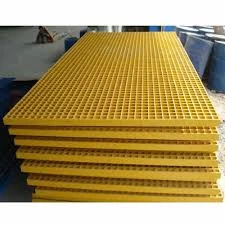loading...
- No. 9, Xingyuan South Street, Dongwaihuan Road, Zaoqiang County, Hengshui, Hebei, China
- admin@zjcomposites.com
- +86 15097380338
- Welcome to visit our website!
frp balustrade
Understanding FRP Balustrades A Modern Solution for Safety and Aesthetics
When it comes to construction and design, safety and aesthetics are paramount, especially in areas where elevation changes occur, such as balconies, stairs, and bridges. Balustrades serve as protective barriers that not only prevent falls but also enhance the visual appeal of a building. Among the various materials used for balustrades, Fiberglass Reinforced Polymer (FRP) is gaining popularity due to its remarkable properties. This article explores the advantages of FRP balustrades, their applications, and why they are an excellent choice for modern architecture.
What is FRP?
Fiberglass Reinforced Polymer (FRP) is a composite material made of a polymer matrix reinforced with fibers, typically glass. This combination results in a material that offers exceptional strength, durability, and resistance to various environmental factors. The lightweight nature of FRP also makes it easier to handle and install compared to traditional materials like wood, steel, or concrete.
Key Advantages of FRP Balustrades
1. Durability FRP balustrades are engineered to withstand harsh weather conditions, including UV rays, moisture, and extreme temperatures. Unlike wood, which can rot, or metal, which can corrode, FRP maintains its integrity over time, making it an excellent choice for both indoor and outdoor applications.
2. Low Maintenance One of the most appealing aspects of FRP is its minimal maintenance requirements. Regular cleaning with soap and water is typically all that is needed to keep FRP balustrades looking new. This is particularly beneficial for commercial properties, where maintenance can be costly and time-consuming.
3. Aesthetic Versatility FRP can be molded into a variety of shapes and colors, offering designers and architects substantial freedom in creating custom looks. Whether it’s a sleek modern design or a classical style, FRP balustrades can be tailored to fit the architectural vision.
frp balustrade

4. Safety and Compliance Safety is a primary concern for any balustrade system. FRP balustrades are designed to meet or exceed building code requirements for safety. They provide a sturdy barrier that can effectively prevent accidents, and their inherent strength ensures they can withstand significant impacts.
5. Cost-Effectiveness Although the initial investment in FRP may be higher than traditional materials, its longevity and low maintenance costs make it a more economical choice in the long run. The reduced need for repairs or replacements can lead to significant savings over time.
Applications of FRP Balustrades
FRP balustrades are suitable for various settings, from residential properties to commercial buildings and public spaces. Common applications include
- Balconies and Terraces FRP balustrades provide safety without obstructing views, making them ideal for residential balconies and terraces. - Staircases They can be installed in staircases to enhance safety and aesthetics, especially in modern architectural designs. - Bridges and Walkways Due to their lightweight and durable nature, FRP balustrades are often used in pedestrian bridges and walkways. - Pools and Recreational Areas Their resistance to moisture and chemicals makes FRP a perfect choice for poolside balustrades.
Conclusion
FRP balustrades represent a modern solution that combines safety, durability, and aesthetic appeal. As architects and builders continue to seek innovative materials that meet the demands of contemporary design, FRP stands out for its unique advantages. Whether for residential use, commercial projects, or public areas, FRP balustrades not only fulfill safety regulations but also contribute to the overall beauty of a structure. As the construction industry moves toward sustainable and efficient materials, FRP balustrades will undoubtedly play a significant role in shaping the future of architectural safety solutions.
-
GRP Structures: The Future of Lightweight, High-Performance EngineeringNewsJun.20,2025
-
FRP Water Tank: High-Performance Storage for Corrosive and Clean Water SystemsNewsJun.20,2025
-
FRP Square Tube: The New Industry Standard for Chemical and Structural ApplicationsNewsJun.20,2025
-
FRP Pultruded Profiles: The Ultimate Choice for Lightweight Structural StrengthNewsJun.20,2025
-
FRP Handrails: The Safer, Smarter, and Stronger Choice for Modern InfrastructureNewsJun.20,2025
-
FRP Grating: The Smart Solution for Durable, Lightweight Industrial FlooringNewsJun.20,2025
-
Why Choose a Galvanized Water Tank for Your Storage NeedsNewsMay.21,2025
